Solar System: Things To Know This Week
Solar System: Things to Know This Week
Reaching out into space yields benefits on Earth. Many of these have practical applications — but there’s something more than that. Call it inspiration, perhaps, what photographer Ansel Adams referred to as nature’s “endless prospect of magic and wonder.“
Our ongoing exploration of the solar system has yielded more than a few magical images. Why not keep some of them close by to inspire your own explorations? This week, we offer 10 planetary photos suitable for wallpapers on your desktop or phone. Find many more in our galleries. These images were the result of audacious expeditions into deep space; as author Edward Abbey said, "May your trails be crooked, winding, lonesome, dangerous, leading to the most amazing view.”

1. Martian Selfie
This self-portrait of NASA’s Curiosity Mars rover shows the robotic geologist in the “Murray Buttes” area on lower Mount Sharp. Key features on the skyline of this panorama are the dark mesa called “M12” to the left of the rover’s mast and pale, upper Mount Sharp to the right of the mast. The top of M12 stands about 23 feet (7 meters) above the base of the sloping piles of rocks just behind Curiosity. The scene combines approximately 60 images taken by the Mars Hand Lens Imager, or MAHLI, camera at the end of the rover’s robotic arm. Most of the component images were taken on September 17, 2016.
800 x 600
1024 x 768
1280 x 1024
1600 x 1200
1280 x 800
1440 x 900
1920 x 1200

2. The Colors of Pluto
NASA’s New Horizons spacecraft captured this high-resolution, enhanced color view of Pluto on July 14, 2015. The image combines blue, red and infrared images taken by the Ralph/Multispectral Visual Imaging Camera (MVIC). Pluto’s surface sports a remarkable range of subtle colors, enhanced in this view to a rainbow of pale blues, yellows, oranges, and deep reds. Many landforms have their own distinct colors, telling a complex geological and climatological story that scientists have only just begun to decode.
800 x 600
1024 x 768
1280 x 1024
1600 x 1200
1280 x 800
1440 x 900
1920 x 1200

3. The Day the Earth Smiled
On July 19, 2013, in an event celebrated the world over, our Cassini spacecraft slipped into Saturn’s shadow and turned to image the planet, seven of its moons, its inner rings — and, in the background, our home planet, Earth. This mosaic is special as it marks the third time our home planet was imaged from the outer solar system; the second time it was imaged by Cassini from Saturn’s orbit, the first time ever that inhabitants of Earth were made aware in advance that their photo would be taken from such a great distance.
800 x 600
1024 x 768
1280 x 1024
1600 x 1200
1280 x 800
1440 x 900
1920 x 1200

4. Looking Back
Before leaving the Pluto system forever, New Horizons turned back to see Pluto backlit by the sun. The small world’s haze layer shows its blue color in this picture. The high-altitude haze is thought to be similar in nature to that seen at Saturn’s moon Titan. The source of both hazes likely involves sunlight-initiated chemical reactions of nitrogen and methane, leading to relatively small, soot-like particles called tholins. This image was generated by combining information from blue, red and near-infrared images to closely replicate the color a human eye would perceive.
800 x 600
1024 x 768
1280 x 1024
1600 x 1200
1280 x 800
1440 x 900
1920 x 1200

5. Catching Its Own Tail
A huge storm churning through the atmosphere in Saturn’s northern hemisphere overtakes itself as it encircles the planet in this true-color view from Cassini. This picture, captured on February 25, 2011, was taken about 12 weeks after the storm began, and the clouds by this time had formed a tail that wrapped around the planet. The storm is a prodigious source of radio noise, which comes from lightning deep within the planet’s atmosphere.
800 x 600
1024 x 768
1280 x 1024
1600 x 1200
1280 x 800
1440 x 900
1920 x 1200

6. The Great Red Spot
Another massive storm, this time on Jupiter, as seen in this dramatic close-up by Voyager 1 in 1979. The Great Red Spot is much larger than the entire Earth.
800 x 600
1024 x 768
1280 x 1024
1600 x 1200
1280 x 800
1440 x 900
1920 x 1200

7. More Stormy Weather
Jupiter is still just as stormy today, as seen in this recent view from NASA’s Juno spacecraft, when it soared directly over Jupiter’s south pole on February 2, 2017, from an altitude of about 62,800 miles (101,000 kilometers) above the cloud tops. From this unique vantage point we see the terminator (where day meets night) cutting across the Jovian south polar region’s restless, marbled atmosphere with the south pole itself approximately in the center of that border. This image was processed by citizen scientist John Landino. This enhanced color version highlights the bright high clouds and numerous meandering oval storms.
800 x 600
1024 x 768
1280 x 1024
1600 x 1200
1280 x 800
1440 x 900
1920 x 1200

8. X-Ray Vision
X-rays stream off the sun in this image showing observations from by our Nuclear Spectroscopic Telescope Array, or NuSTAR, overlaid on a picture taken by our Solar Dynamics Observatory (SDO). The NuSTAR data, seen in green and blue, reveal solar high-energy emission. The high-energy X-rays come from gas heated to above 3 million degrees. The red channel represents ultraviolet light captured by SDO, and shows the presence of lower-temperature material in the solar atmosphere at 1 million degrees.
800 x 600
1024 x 768
1280 x 1024
1600 x 1200
1280 x 800
1440 x 900
1920 x 1200

9. One Space Robot Photographs Another
This image from NASA’s Mars Reconnaissance Orbiter shows Victoria crater, near the equator of Mars. The crater is approximately half a mile (800 meters) in diameter. It has a distinctive scalloped shape to its rim, caused by erosion and downhill movement of crater wall material. Since January 2004, the Mars Exploration Rover Opportunity has been operating in the region where Victoria crater is found. Five days before this image was taken in October 2006, Opportunity arrived at the rim of the crater after a drive of more than over 5 miles (9 kilometers). The rover can be seen in this image, as a dot at roughly the “ten o'clock” position along the rim of the crater. (You can zoom in on the full-resolution version here.)
800 x 600
1024 x 768
1280 x 1024
1600 x 1200
1280 x 800
1440 x 900
1920 x 1200

10. Night Lights
Last, but far from least, is this remarkable new view of our home planet. Last week, we released new global maps of Earth at night, providing the clearest yet composite view of the patterns of human settlement across our planet. This composite image, one of three new full-hemisphere views, provides a view of the Americas at night from the NASA-NOAA Suomi-NPP satellite. The clouds and sun glint — added here for aesthetic effect — are derived from MODIS instrument land surface and cloud cover products.
Full Earth at night map
Americas at night
Discover more lists of 10 things to know about our solar system HERE.
Make sure to follow us on Tumblr for your regular dose of space: http://nasa.tumblr.com
More Posts from T-sci-eng and Others
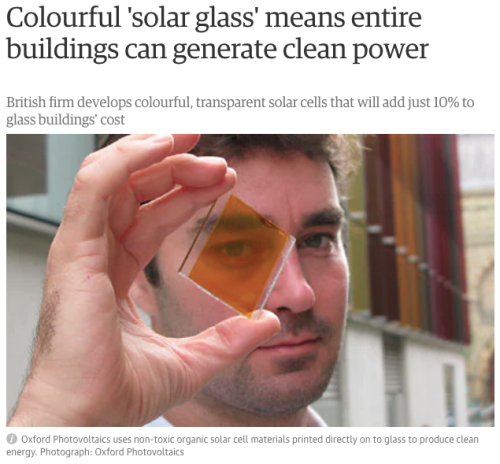

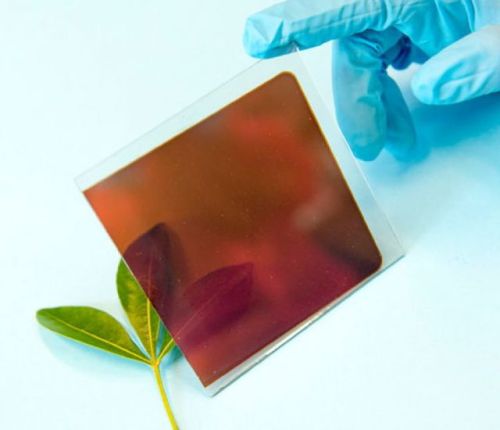
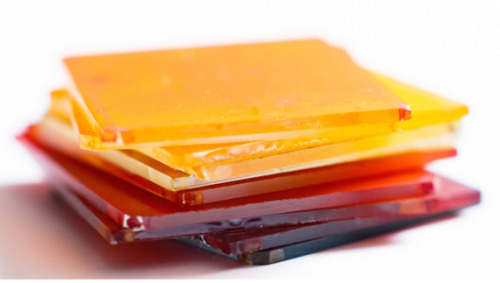
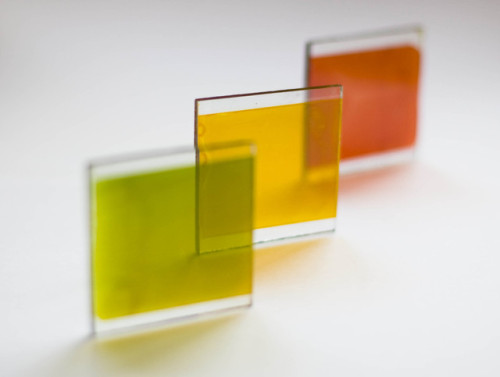
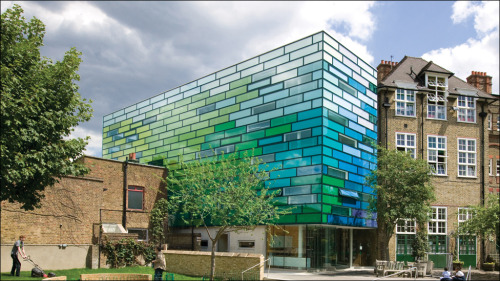
Just imagine a world full of beautiful stained glass windows which also generate electricity…
[Oxford Photovoltaics]
Hi I made this app called PhysicsPedia. It contains all the theory and formulas of high school and college physics. Please have a look. https://play.google.com/store/apps/details?id=com.pp.nikit.phyprac2
Editor’s Note:
Thank you for your submission android-nikit and we did check the app out and it is really interesting and useful. If you are in high school, we recommend you give this one a try!






Okay, I’ve really missed talking about teratology.
These dogs have polydactyl, but what’s interesting is that the extra dew claws can move independently of one another and grip things. They’re only found on the hind feet giving the dogs a distinctly velociraptor look
The Beauceron is an ancient breed, and no one has a definitive answer of why they have these, but the prevailing theory is that they were bred to do a lot of rock climbing because they were used for herding and hunting over rocky mountainous terrain.
Other places to see my posts: INSTAGRAM / FACEBOOK / ETSY / KICKSTARTER
These giant mesh nets provide drinking water in the driest desert on Earth.

This month on FYP!
It has been a blissful month in physics with the nobel prize for the work on gravitational waves and LIGO swiftly striking back with the detection of a neutron star merger.
At FYP! we have started to dwell a little bit into the essence of condensed matter physics while exploring some really cool science and engineering along the way.
Here’s what went down on FYP! this month:

Nobel prize in physics article on Gravitational waves
Gravitational waves, Light and Merging neutron stars

Paramagnets and Combinatorics
Diamagnetic levitation - Ig Nobel prize(2000)
Levitating frogs and superconductivity

Revisiting rolling shutter
Cooking with a computer (the importance of a heat sink on a computer)
Cartoon laws of physics
Beautiful proofs (#3) - Euler’s sum
Have a great day!
Major types of Engines
Straight In-line
This is the type of engine that you find in your quotidian car. Nothing fancy, just all pistons arranged parallel along the vertical direction.

V in-line
Now, this is the sort of the engine that you find on sports cars like the Ferrari. When you hear sports enthusiasts go ‘ Whoa, that’s a V-12! ‘ - it just means that the engine has a V-type arrangement with 12 cylinders.

V + Inline = V-inline
Commonly referred to as the VR engine.
The name VR6 comes from a combination of V engine (German: V-Motor), and the German word “Reihenmotor” (meaning “inline engine” or “straight engine”)

Volkswagen’s VR6 engines, and the later VR5 variants, are a family of internal combustion engines, characterized by a narrow-angle (10.5° or 15°) V engine configuration.

a: straight engine, b: V engine, c: VR engine
W engine
A W engine is a type of reciprocating engine ( again created by Volkswagen) arranged with its cylinders in a configuration in which the cylinder banks resemble the letter W, in the same way those of a V engine resemble the letter V.

Bugatti Veyron’s W16 engine
A W16 engine is used on the Bugatti Veyron. That’s 16 cylinders!
Flat Engine
Flat engines offer several advantages for motorcycles, namely: a low centre of gravity, smoothness, suitability for shaft drive, and (if air-cooled) excellent cooling of the cylinders. You can find them on aircrafts as well

Radial Engine (aka the dancing starfish)
They were used mostly in small aircraft for the propeller
The big advantage of radials was their large frontal area, which meant they could be air cooled, meaning less maintenance, failures, and of course a lower cost of initial purchase and maintenance.

Wankel Engine
This engine has only 3 moving parts and can make a lot of power.However, they are pretty inefficient, the last car to use this was a Mazda RX-8.

Axial Engine

The axial engine is a very interesting design. But they are not widely used because they are just hard to make and running these things at high RPM’s is a challenge.
Duke engines are equipped with this type.
Jet engine
Commonly jet engines refer to the engines that are found on, well Jets!
Suck,squeeze,bang and blow
Air is sucked in through the front and squeezed. A controlled explosion follows and the exhaust is blown out through the back

But, Jet engines also include the engines that are found on rockets, hybrids and water-jets. And their mode of operation is different than the one mentioned above.
Pretty cool eh?
Have a great day!
PC: Howstuffworks, Duke, MichaelFrey, Azure.km
** There is also the Stirling Engine. It’s amazing and a topic for an another post. But if you are interested do check out more about it here.
EDIT : Had forgotten about the VR and the W-engines. My bad! Thanks for pointing it out.:D.
EDIT2: The suck squeeze bang and blow illustration was incorrect. Ergo, changed that.
Solar System: Things to Know This Week
Reaching out into space yields benefits on Earth. Many of these have practical applications — but there’s something more than that. Call it inspiration, perhaps, what photographer Ansel Adams referred to as nature’s “endless prospect of magic and wonder.“
Our ongoing exploration of the solar system has yielded more than a few magical images. Why not keep some of them close by to inspire your own explorations? This week, we offer 10 planetary photos suitable for wallpapers on your desktop or phone. Find many more in our galleries. These images were the result of audacious expeditions into deep space; as author Edward Abbey said, "May your trails be crooked, winding, lonesome, dangerous, leading to the most amazing view.”

1. Martian Selfie
This self-portrait of NASA’s Curiosity Mars rover shows the robotic geologist in the “Murray Buttes” area on lower Mount Sharp. Key features on the skyline of this panorama are the dark mesa called “M12” to the left of the rover’s mast and pale, upper Mount Sharp to the right of the mast. The top of M12 stands about 23 feet (7 meters) above the base of the sloping piles of rocks just behind Curiosity. The scene combines approximately 60 images taken by the Mars Hand Lens Imager, or MAHLI, camera at the end of the rover’s robotic arm. Most of the component images were taken on September 17, 2016.
800 x 600
1024 x 768
1280 x 1024
1600 x 1200
1280 x 800
1440 x 900
1920 x 1200

2. The Colors of Pluto
NASA’s New Horizons spacecraft captured this high-resolution, enhanced color view of Pluto on July 14, 2015. The image combines blue, red and infrared images taken by the Ralph/Multispectral Visual Imaging Camera (MVIC). Pluto’s surface sports a remarkable range of subtle colors, enhanced in this view to a rainbow of pale blues, yellows, oranges, and deep reds. Many landforms have their own distinct colors, telling a complex geological and climatological story that scientists have only just begun to decode.
800 x 600
1024 x 768
1280 x 1024
1600 x 1200
1280 x 800
1440 x 900
1920 x 1200

3. The Day the Earth Smiled
On July 19, 2013, in an event celebrated the world over, our Cassini spacecraft slipped into Saturn’s shadow and turned to image the planet, seven of its moons, its inner rings — and, in the background, our home planet, Earth. This mosaic is special as it marks the third time our home planet was imaged from the outer solar system; the second time it was imaged by Cassini from Saturn’s orbit, the first time ever that inhabitants of Earth were made aware in advance that their photo would be taken from such a great distance.
800 x 600
1024 x 768
1280 x 1024
1600 x 1200
1280 x 800
1440 x 900
1920 x 1200

4. Looking Back
Before leaving the Pluto system forever, New Horizons turned back to see Pluto backlit by the sun. The small world’s haze layer shows its blue color in this picture. The high-altitude haze is thought to be similar in nature to that seen at Saturn’s moon Titan. The source of both hazes likely involves sunlight-initiated chemical reactions of nitrogen and methane, leading to relatively small, soot-like particles called tholins. This image was generated by combining information from blue, red and near-infrared images to closely replicate the color a human eye would perceive.
800 x 600
1024 x 768
1280 x 1024
1600 x 1200
1280 x 800
1440 x 900
1920 x 1200

5. Catching Its Own Tail
A huge storm churning through the atmosphere in Saturn’s northern hemisphere overtakes itself as it encircles the planet in this true-color view from Cassini. This picture, captured on February 25, 2011, was taken about 12 weeks after the storm began, and the clouds by this time had formed a tail that wrapped around the planet. The storm is a prodigious source of radio noise, which comes from lightning deep within the planet’s atmosphere.
800 x 600
1024 x 768
1280 x 1024
1600 x 1200
1280 x 800
1440 x 900
1920 x 1200

6. The Great Red Spot
Another massive storm, this time on Jupiter, as seen in this dramatic close-up by Voyager 1 in 1979. The Great Red Spot is much larger than the entire Earth.
800 x 600
1024 x 768
1280 x 1024
1600 x 1200
1280 x 800
1440 x 900
1920 x 1200

7. More Stormy Weather
Jupiter is still just as stormy today, as seen in this recent view from NASA’s Juno spacecraft, when it soared directly over Jupiter’s south pole on February 2, 2017, from an altitude of about 62,800 miles (101,000 kilometers) above the cloud tops. From this unique vantage point we see the terminator (where day meets night) cutting across the Jovian south polar region’s restless, marbled atmosphere with the south pole itself approximately in the center of that border. This image was processed by citizen scientist John Landino. This enhanced color version highlights the bright high clouds and numerous meandering oval storms.
800 x 600
1024 x 768
1280 x 1024
1600 x 1200
1280 x 800
1440 x 900
1920 x 1200

8. X-Ray Vision
X-rays stream off the sun in this image showing observations from by our Nuclear Spectroscopic Telescope Array, or NuSTAR, overlaid on a picture taken by our Solar Dynamics Observatory (SDO). The NuSTAR data, seen in green and blue, reveal solar high-energy emission. The high-energy X-rays come from gas heated to above 3 million degrees. The red channel represents ultraviolet light captured by SDO, and shows the presence of lower-temperature material in the solar atmosphere at 1 million degrees.
800 x 600
1024 x 768
1280 x 1024
1600 x 1200
1280 x 800
1440 x 900
1920 x 1200

9. One Space Robot Photographs Another
This image from NASA’s Mars Reconnaissance Orbiter shows Victoria crater, near the equator of Mars. The crater is approximately half a mile (800 meters) in diameter. It has a distinctive scalloped shape to its rim, caused by erosion and downhill movement of crater wall material. Since January 2004, the Mars Exploration Rover Opportunity has been operating in the region where Victoria crater is found. Five days before this image was taken in October 2006, Opportunity arrived at the rim of the crater after a drive of more than over 5 miles (9 kilometers). The rover can be seen in this image, as a dot at roughly the “ten o'clock” position along the rim of the crater. (You can zoom in on the full-resolution version here.)
800 x 600
1024 x 768
1280 x 1024
1600 x 1200
1280 x 800
1440 x 900
1920 x 1200

10. Night Lights
Last, but far from least, is this remarkable new view of our home planet. Last week, we released new global maps of Earth at night, providing the clearest yet composite view of the patterns of human settlement across our planet. This composite image, one of three new full-hemisphere views, provides a view of the Americas at night from the NASA-NOAA Suomi-NPP satellite. The clouds and sun glint — added here for aesthetic effect — are derived from MODIS instrument land surface and cloud cover products.
Full Earth at night map
Americas at night
Discover more lists of 10 things to know about our solar system HERE.
Make sure to follow us on Tumblr for your regular dose of space: http://nasa.tumblr.com
What is Liquid Penetrant Testing?
Liquid penetrant testing (LT) is a non-destructive testing technique utilized to detect defects or discontinuities (such as cracks) on the surface of any type of non-porous material such as metal, plastics or ceramics. Liquid penetrant testing (also known as dye penetrant testing or penetrant testing) is primarily utilized in the industrial sector to test metal materials such as oil & gas pipelines and various metal machinery components to prevent failures or accidents. Some of the many defects that can be detected using this process include fatigue cracks, hairline cracks and porosity. A number of industries utilize liquid penetrant testing, including petrochemical, aerospace, engineering, automotive and many more.
Although liquid penetrant testing is the least technologically advanced method of non-destructive testing (with the others being ultrasonic testing, magnetic particle testing and radiography) – it is still widely used. That’s because liquid penetrant testing has the advantages of being low in cost, versatile and easy to perform. In fact, liquid penetrant testing requires very little training when compared to the other three main forms of non-destructive testing.
So exactly how does liquid penetrant testing work? The material to be tested must first be cleaned – usually using a simple spray cleaner that can be easily wiped off with a cloth or rag. A liquid penetrant solution is then applied to the surface of the material being tested using a simple aerosol spray from a can. The liquid is then left to soak for a predetermined length of time – and will eventually seep into or be drawn into any cracks or defects within the material being tested. After the appropriate amount of “soak time” has passed, the technician wipes the liquid penetrant off of the test object. A developer is then applied to the entire area being tested. The developer is usually a dry white powder such as chalk that is suspended in liquid and sprayed on in aerosol form. The developer then acts to draw out any liquid that may have seeped into a defect – giving a highly visible, colored indication on the surface of the test object.
Liquid penetrant testing relies solely on visual inspection – making the color contrast between the object being tested and the colored indication that reveals defects of utmost importance. For this reason, many technicians utilize fluorescents. This process is the same as conventional liquid penetrant testing, with the exception that a fluorescent penetrant is utilized and then the test object is viewed under ultraviolet light in a darkened environment. The result is that any defects present will glow brightly under the UV light – making visual inspection much easier.
Aside from the obvious advantages of being inexpensive and easy to use, liquid penetrant testing is also popular because of its versatility. In most cases, nothing more than three aerosol cans – cleaner, penetrant and developer – and a few cloths or rags are needed. This allows technicians to easily maneuver into tight spaces such as boilers or high places where ladders are required – easily completing testing in locations where other non-destructive testing techniques are difficult or impossible. For these reasons, liquid penetrant testing continues to be a viable and popular non-destructive testing method.
Tech Service Products is a stocking distributor of industrial supplies and non-destructive testing products such as liquid penetrant testing products.
What is glass?
When most people think of glass, their mind probably jumps straight to windows. And perhaps they’ve heard that old myth - that glass is actually a liquid, not a solid.
So what is glass?
Well, you’ve probably seen something like this before:

The three common phases of matter - gas, liquid, and solid. But you’ll notice that the solid picture is labeled crystalline state. Most people consider glass to be a solid, but it doesn’t quite look like that.
Crystals have a well defined structure, exhibiting long-range order. Glass is what’s called an amorphous material, exhibiting only short-range order.
Basically, glass is a different kind of solid:

The quartz shown above is an example of a crystalline material. The molecules of glass on the other hand are disordered - yet still solid.
To create glass, the liquid melt has to be cooled fast enough to prevent the substance from crystallizing. This fast cooling locks the atoms or molecules in the disordered state that looks like the liquid phase.
Characterizing a substance as a glass also means that this glass transition is reversible.
While most glass is optically transparent, the properties depend on the composition of the glass. Most of what you see every day is soda-lime-silicate glass, but there are many different kinds of glasses, including sodium borosilicate glass (Pyrex), lead-oxide glass, and aluminosilicate glass.
Sources: x x
-
 sandra-alland liked this · 1 year ago
sandra-alland liked this · 1 year ago -
 white-trash-balling reblogged this · 5 years ago
white-trash-balling reblogged this · 5 years ago -
 kjothrae liked this · 5 years ago
kjothrae liked this · 5 years ago -
 franzsandz liked this · 5 years ago
franzsandz liked this · 5 years ago -
 cruger2984 reblogged this · 6 years ago
cruger2984 reblogged this · 6 years ago -
 classica-1750 reblogged this · 6 years ago
classica-1750 reblogged this · 6 years ago -
 classica-1750 liked this · 6 years ago
classica-1750 liked this · 6 years ago -
 transedwizard liked this · 6 years ago
transedwizard liked this · 6 years ago -
 magicalmischel liked this · 6 years ago
magicalmischel liked this · 6 years ago -
 qupidddd liked this · 6 years ago
qupidddd liked this · 6 years ago -
 eckelt69-blog reblogged this · 6 years ago
eckelt69-blog reblogged this · 6 years ago -
 veinele liked this · 6 years ago
veinele liked this · 6 years ago -
 cutesyrat-blog reblogged this · 6 years ago
cutesyrat-blog reblogged this · 6 years ago -
 cutesyrat-blog liked this · 6 years ago
cutesyrat-blog liked this · 6 years ago -
 revolvingaboutanime liked this · 6 years ago
revolvingaboutanime liked this · 6 years ago -
 lenalena009 liked this · 6 years ago
lenalena009 liked this · 6 years ago -
 naiyion liked this · 7 years ago
naiyion liked this · 7 years ago -
 floralcyanide reblogged this · 7 years ago
floralcyanide reblogged this · 7 years ago -
 xxbassmentxx liked this · 7 years ago
xxbassmentxx liked this · 7 years ago -
 fleurdebach5-blog liked this · 7 years ago
fleurdebach5-blog liked this · 7 years ago -
 captaingalaxy11231 liked this · 7 years ago
captaingalaxy11231 liked this · 7 years ago -
 eaglejeepster liked this · 7 years ago
eaglejeepster liked this · 7 years ago -
 boohyhere liked this · 7 years ago
boohyhere liked this · 7 years ago -
 mcbertock reblogged this · 7 years ago
mcbertock reblogged this · 7 years ago -
 mcbertock liked this · 7 years ago
mcbertock liked this · 7 years ago -
 audcmarie liked this · 7 years ago
audcmarie liked this · 7 years ago -
 kalesockss reblogged this · 7 years ago
kalesockss reblogged this · 7 years ago -
 alexxakawaii-blog liked this · 7 years ago
alexxakawaii-blog liked this · 7 years ago -
 tomo-neko liked this · 7 years ago
tomo-neko liked this · 7 years ago -
 jerseyd3vil liked this · 7 years ago
jerseyd3vil liked this · 7 years ago -
 guiness4me liked this · 7 years ago
guiness4me liked this · 7 years ago -
 imaginaryboox liked this · 7 years ago
imaginaryboox liked this · 7 years ago









